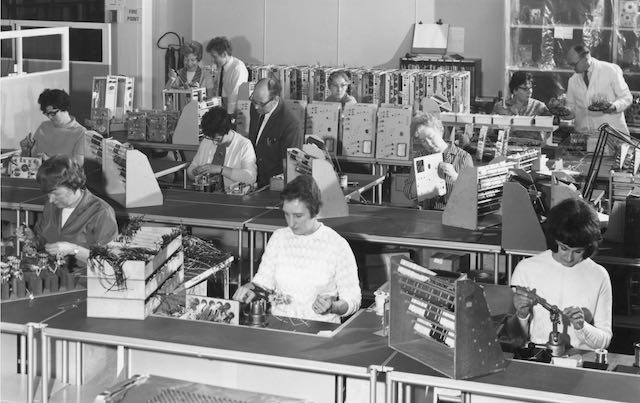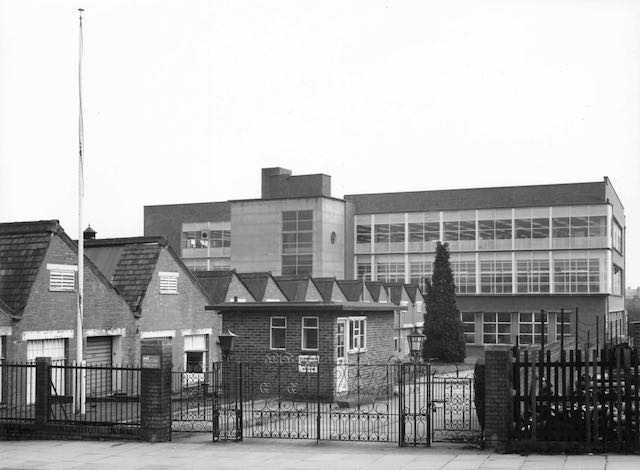Longacres was its home but it also occupied two sites in Fleetville
Wireless telegraphy resulted from Guglielmo Marconi's experiments from the late 19th century, and the first company in the UK which bore his name was Marconi Wireless, which came to settle in Chelmsford. The increasing need for instrumentation to measure the equipment the company was building led to collaboration in the 1930s with the Eric Kirkham Cole enterprise (EKCO) of Southend. The new company was called Marconi Instruments, headquartered in St Albans.
Company advertising


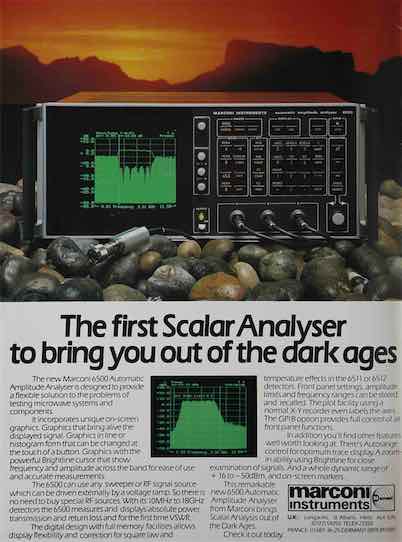


COURTESY MARCONI HERITAGE GROUP and GRACE'S GUIDE.
-
From Southend to St Albans
When Marconi developed a measurement, testing, and instrument design and build department in 1936 it did so in collaboration with the company of Eric K Cole (EKCO) based in Southend. For the next three years a small range of instruments was developed by both companies working together. However, the anticipated importance of the company's projects caused some concern to the government, and the projected onset of hostilities convinced the government to authorise the removal for the production lines away from the east coast.
Marconi established a fully fledged new company, buying out the EKCO team in 1939 and sought a safer site. A small base was created in a house – in fact it was described as a cottage – in the village of Radlett. A short while later a vacated villa at 29 Hatfield House became available and offered an administrative base for the fledgling company. In the 1950s this house would become the formative St Albans College of Further Education.
Its assembly building from Southend, moved into unoccupied space in part of the herbal specialist warehouse of Heath & Heather in Ridgmont Road, next to St Albans City Railway Station. Components were stored in a variety of locations, including a site to the east of St Albans at a former brickworks. A second assembly base was set up in a former furniture factory in High Wycombe.
1 of 6 -
Brickworks home
A former brickworks site, closed following a fire in the 1930s, remained between Hatfield Road and Hill End Lane. Partly cleared, temporary buildings were brought in and utilised for the storage of components, together with a number of staff able to manage stock control, ordering and delivery.
While the temporary buildings, including Heath & Heather, were satisfactory for continued wartime assembly and supply, a permanent solution would be required to maintain and sustain the young company. A long-term and permanent solution came with re-purposing the Hill End Brickworks site. New buildings were added to gradually create an increased number of design and assembly departments, and facilities for an increased number of personnel and service areas.
The land between the site and Hatfield Road had been acquired before the war for housing, A front entrance to the factory was linked to the residential road, and gave the company its well-known address: Marconi Instruments, Longacres.
2 of 6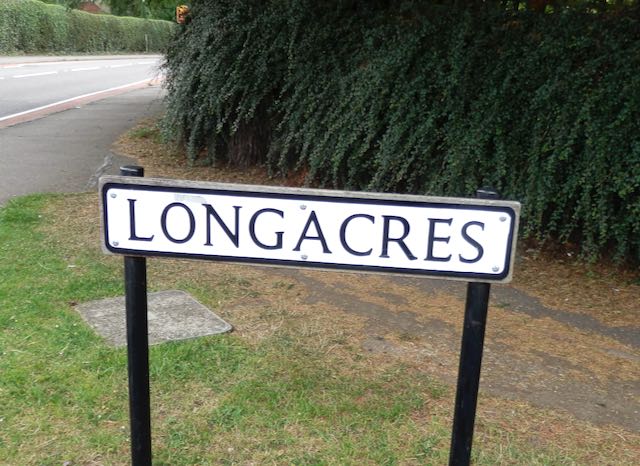
-
Homes for employees
When the company had first launched at the start of the war large numbers of employees had been gathered from various parts of the country. Over time those working at the High Wycombe and St Albans bases had settled in temporary accommodation. However, once the High Wycombe factory closed in 1946, coaches had to be laid on to return workers each day to their temporary Buckinghamshire homes, since there was a huge housing shortage in St Albans.
The government supplied a number of prefabs in Lectern Lane, Holyrood Crescent and Creighton Avenue, with further accommodation in Hill End Lane. Separate negotiations with the local authority enabled two phases of two storey homes to be constructed at the upper end of an incomplete estate in Charmouth Road.
Copies of the Company's early journals describe the projects undertaken by enterprising employees in building their own homes on approved plots in St Albans.
3 of 6

-
Stores and Maintenance
Two highly organised departments created in the 1940s and 1950s were Main Stores and Maintenance.
The former accounted for over 7,000 individual components, even when the company's output range was modest. The technologies of the time demanded steel balls, instrument cases, potentiometers, condensers and resistors; endless gauges of wire, not to mention switches, rectifiers, valves and various valuable materials which, the journal confirms, were "kept under lock and key." Each item type was allocated to production line tasks or for unique design and construction.
Unlike today where maintenance and upgrades are outsourced to separate specialist businesses, Marconi's own Maintenance Department was a multi-faceted internal organisation in its own right, with specialised sections, such as carpentry and joinery, machinery, electrical, vehicles, and workshop temperature control. Maintenance also designed and made its own furniture, including work benches and racks.
Responsible not only for what was contained within the building, but the structures themselves and the open spaces between buildings, all were the responsibility of the Maintenance Department.
No doubt the company even designed and built its own internal communications systems, probably called a telephone exchange in the early days!
4 of 6
-
Work Life Balance
If you worked at Marconi Instruments or Marconi Wireless there existed the opportunity of belonging to a range of social groups depending on your interest. Dahlias, model railways, shooting, photography, film, drama and music were among those on offer. Sporting events for all seasons also included competitions between departments and other branches of the company.
Grounds at Cotlandswick, London Colney, owned by the company, were available for groups to use. Once the company had taken over the former Ballito Works use was also made of that company's sports ground at Smallford Brook field in Hatfield.
Marconi Instruments was also well known for its annual fetes, sports days, flower shows and open days, also available to members of the public. Great publicity for the company and its future employee potential. They were well reported in the Herts Advertiser, and the event days themselves were hugely well attended.
On Saturdays throughout the year coaches would arrive at the factory ready to take the families of employees on day trips. Although the seaside was popular in the summer season, country locations, towns and special events were also popular.
A large number of employees were family men and women, and so children's parties were also popular, based at the works canteen in Longacres. Children could occasionally invite guests, but the key requirement was to enjoy food and entertainment with the largest number of children which the room could accommodate.
5 of 6
-
Expanding
As Marconi Instruments matured as a manufacturing base, especially as MI won an increasing number of major contracts, there was a desire to invite potential clients to Longacres to participate in demonstrations, to show off equipment and take those same clients to MI installations at airports, stations, ships and television studios both at home and abroad.
However, there remained a finite floor area available at the factory. Marconi had always proudly held a headquarter building in The Strand, London and a central sales centre was opened here, at which Marconi Instruments maintained a significant floor area on a mezzanine floor.
Meanwhile, new sectors were opening up, with specialist equipment dedicated to medical and x-ray ranges. Initially, these were accommodated at Longacrea inter-mixed with other production lines, but a new building was opened in Sandridge Road, dedicated to the X-Ray Division.
So, while the formative company was busy centralising all facilities into a single site, as it created new specialisms so new buildings on multiple sites were launched to ensure the commercial success of the operations.
6 of 6
The Marconi Companies and their People
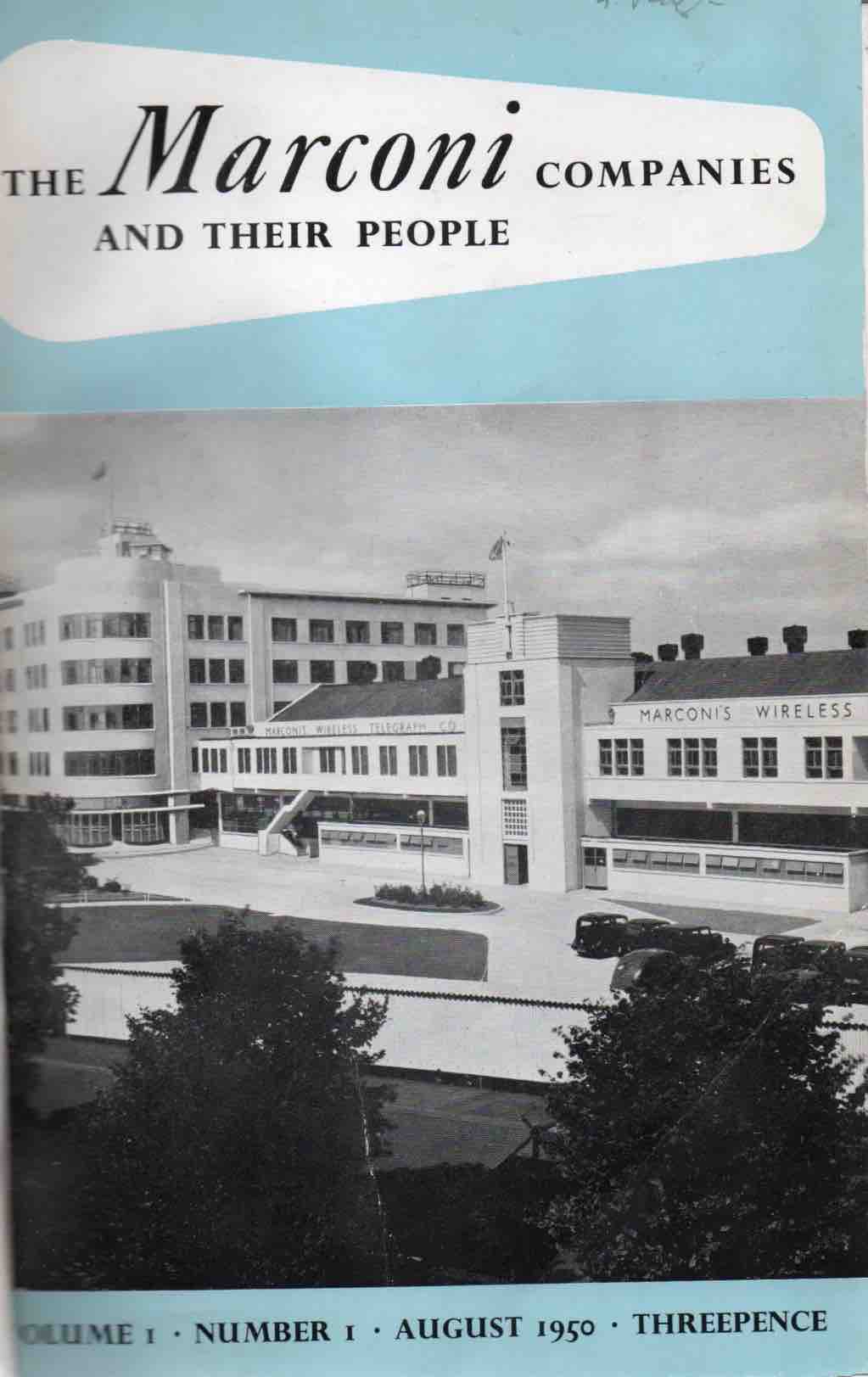

It was all too easy for the various factory sites to feel isolated and disconnected from other locations and specialisms, not only those under the Marconi Instruments (MI) umbrella, but also Marconi Wireless factories.
In 1950 a bi-monthly journal informed all employees of new developments and explained how all the workshops co-operated, both in work and socially.
Here is a segment of a 1951 article:
"Around the late thirties a young lady travelled around the capital cities of Europe disguised as a tourist, but was in fact spying. When in London she sang and danced.
Ho hum. Let's tear aside the veil of mystery and intrigue. Hilda Wallace was really reporting the efficiency of Cook's touring facilities for her boss.
When Cook's folded at the beginning of the war, Miss Wallace joined MI, who had evacuated to a cottage at Radlett before settling at Elmhurst in Hatfield Road (later the formative number 29, the College of Further Education). There, Miss Wallace became Office Service Supervisor, and when the new Long Acres factory opened she became Secretary to the General Manager.
She began in 1939 as Secretary to the Manager of Publicity and Electro-Medical Sales. Her first job, after leaving the glamour of travel. opera and so on, was sitting in a back kitchen soaking press cuttings from bits of paper and sticking them in a book.
She engaged housekeeping and gardening staff, sold vegetables to personnel, fixed blackouts, bought furniture, ran Publicity and ran the typing pool.
Although, when she started with the company she intended the job to be just for the duration of the war she remained in her old superannuation scheme for years – she kind of got attached to the place."
These were the intriguing and entertaining articles which staff were able to read in the early issues of the staff journal!
Please help us to add further information about the story of Marconi Instruments. See Get in Touch below.
More content will be added shortly.
Usage links
Key pages

© 2024 St Albans' Own East End Mike Neighbour



